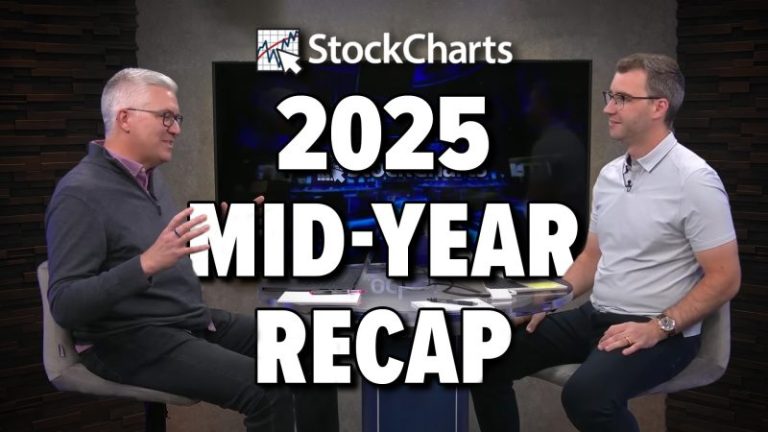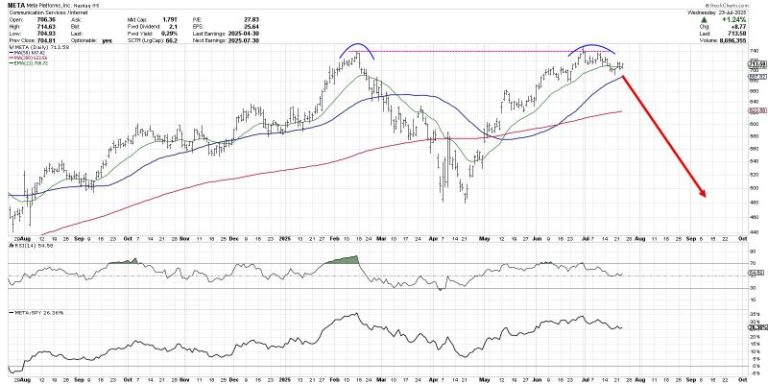Oil prices fell sharply during the second quarter, after reaching year-to-date highs early in the year.
Between January and the end of June, Brent shed 18.26 percent from US$81.69 to US$66.77. West Texas Intermediate made a similar decline falling 16.94 percent from US$78.86 to US$65.50, over the same time period.
The contraction was largely attributed to OPEC+ easing production cuts and increasing output.
Global supply was further bolstered by China’s strong import volumes and rising domestic output, giving refiners room to delay purchases and adding to a mild US inventory build, both of which added downward pressure.
Conversely, seasonal demand from the US summer driving season and solid Q2 GDP growth in China offered some support.
Despite that backdrop, the five top-performing oil and gas stocks on the TSX and TSXV have seen share price growth over Q2 2025. All year-to-date performance and share price data was obtained on July 16, 2025, using TradingView’s stock screener, and oil and gas companies with market caps above C$10 million at that time were considered.
1. Falcon Oil & Gas (TSXV:FO)
Year-to-date gain: 43.75 percent
Market cap: C$127.55 million
Share price: C$0.115
Headquartered in Dublin, Ireland, Falcon Oil & Gas is an international oil and gas company incorporated in BC, Canada. The company specializes in the exploration and development of unconventional oil and gas assets, with interests in assets in Australia, South Africa and Hungary.
On January 24, Falcon issued its first corporate update of 2025, announcing the launch of a well stimulation campaign for two wells for the Shenandoah South pilot project in the Beetaloo Sub-Basin, located in Australia’s Northern Territory.
The company has a 22.5 interest in the Beetaloo joint venture, with Tamboran Resources (NYSE:TBN,ASX:TBN) owning the remaining 77.5 percent.
Falcon’s share price spiked several times in June, reaching a year-to-date high of C$0.14 on June 17, which it maintained through late June. The stock movement coincided with Beetaloo updates, including “stellar” flow test results on June 17.
“The IP30 flow rate results announced today of 7.2 million cubic feet per day (MMcf/d), are truly stellar and marks another major data point in the Beetaloo Sub-basin again demonstrating that it compares to the best shale wells in the United States,” CEO Philip O’Quigley wrote in the press release.
2. Imperial Oil (TSX:IMO)
Year-to-date gain: 25.67 percent
Market cap: C$57.37 billion
Share price: C$112.70
Calgary-based Imperial Oil is a prominent Canadian energy company involved in the exploration, production, refining and marketing of petroleum products. With a history spanning over 140 years, Imperial operates diverse assets across Canada, including oil sands, conventional crude oil and natural gas assets.
On January 31, Imperial released its Q4 2024 results, reporting an estimated net income of C$1.23 billion in Q4 2024, slightly down from C$1.24 billion in Q3. The decline was attributed to lower price realizations, partly offset by higher production and improved refinery utilization in the Downstream segment.
On May 2, the company announced a Q2 2025 dividend of C$0.72 payable on July 1.
Imperial shares reached a year-to-date high of C$113.05 on July 13. The rally occurred after Scotiabank raised its share price target for Imperial from C$100 to C$110 on July 11, citing stronger refining margins and earnings outlook.
3. MEG Energy (TSX:MEG)
Year-to-date gain: 10.07 percent
Market cap: C$6.7 billion
Share price: C$26.35
MEG is an energy company solely focused on in-situ thermal oil production in the southern Athabasca oil region of Alberta, Canada. Utilizing innovative enhanced oil recovery projects, including steam-assisted gravity drainage extraction methods, the company aims to increase oil recovery responsibly while reducing carbon emissions.
In mid-May, Strathcona Resources (TSX:SCR) made an unsolicited C$4.1 billion offer for MEG, a move company executives quickly denounced.
In a subsequent press release on June 16, MEG called the offer “inadequate, opportunistic, and NOT in the best interests of MEG or its shareholders.”
Chairman of the Board James McFarland stated in the release, ‘A combination with Strathcona would expose shareholders to inferior assets and significant capital markets risks, including a C$6 billion overhang resulting from Waterous Energy Fund’s 51 percent ownership in the combined company.”
MEG has launched a strategic review and welcomed alternative bids from other companies.
Shares of MEG rose to a year-to-date high of C$26.14 on June 20, on the heels of the statement and alongside news that operations at the company’s Christina Lake operations in Alberta would resume at full capacity following wildfire interruptions.
4. Headwater Exploration (TSX:HWX)
Year-to-date gain: 3.75 percent
Market cap: C$1.65 billion
Share price: C$6.92
Headwater Exploration is a Canadian oil and gas company focused on developing high-quality assets in Alberta’s Clearwater play and low-decline natural gas in New Brunswick’s McCully Field.
In March, Headwater reported strong 2024 results, with annual production up 13 percent year-over-year to 20,310 barrels of oil equivalent per day (boe/d) and net income rising 20 percent to C$188 million.
Headwater released its Q1 2025 results and a company update in May, highlighting the receipt of TSX approval for a normal course issuer bid, allowing it to repurchase up to 10 percent of its public float over the next year.
Additionally the company reported record production of 22,066 boe/d during Q1 and adjusted funds flow of C$92.4 million. Net income for the period came in at C$50 million. The company declared a quarterly dividend of C$0.11 per share during Q1 and ended the quarter with no debt and C$63.6 million in adjusted working capital.
Company shares spiked to a year-to-date high of C$7.43 on January 9, and reached a Q2 high of C$7.22 on June 19, which coincided with a broader surge in the oil market.
5. Athabasca Oil (TSX:ATH)
Year-to-date gain: 3.72 percent
Market cap: C$2.84 billion
Share price: C$5.57
Athabasca Oil is focused on developing thermal and light oil assets within Alberta’s Western Canadian Sedimentary Basin. The company has established a substantial land base with high-quality resources. Its light oil operations are managed through its private subsidiary, Duvernay Energy, in which the company holds a 70 percent equity interest.
On March 5, Athabasca Oil released its 2024 year end results, highlighting strong production and significant cash flow increases. The company averaged 36,815 boe/d during 2024, marking a 7 percent year-over-year increase.
Its Q1 2025 results released on May 7 reported further production growth, with average petroleum and natural gas production of 37,714 boe/d and average thermal oil output of 34,742 barrels per day.
Athabasca Oil generated C$130 million in adjusted funds flow and C$71 million in free cash flow. The company returns capital to shareholders through annual share buybacks, and at the time of the release, it had completed C$94 million in buybacks since the start of 2025.
Broad market positivity in mid-June pushed shares of Athabasca Oil to a year-to-date high of C$6.16 on June 20.
Securities Disclosure: I, Georgia Williams, hold no direct investment interest in any company mentioned in this article.
This post appeared first on investingnews.com










